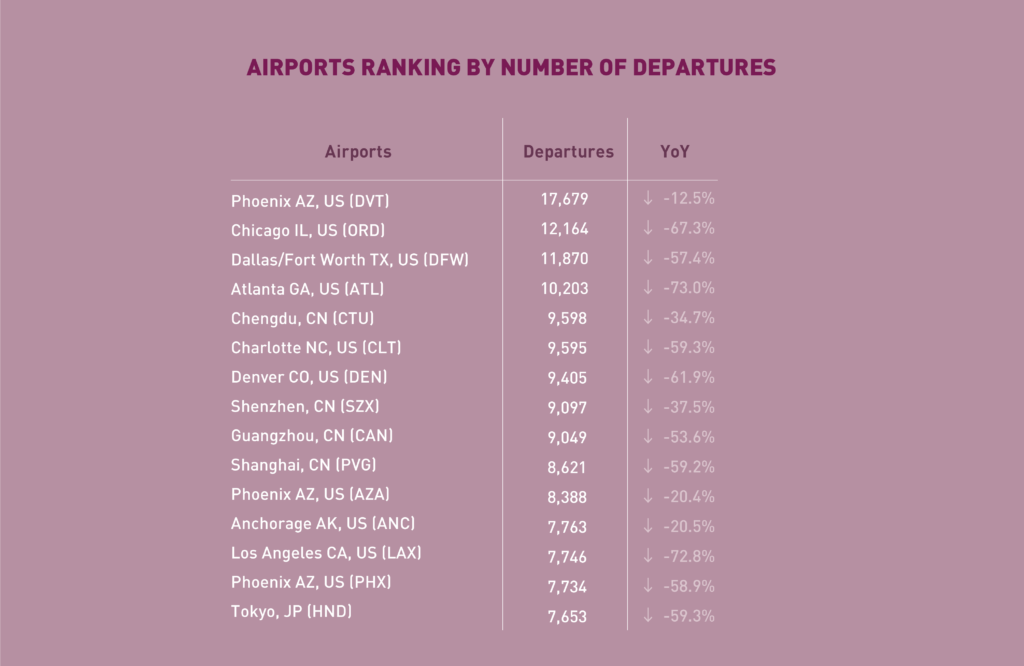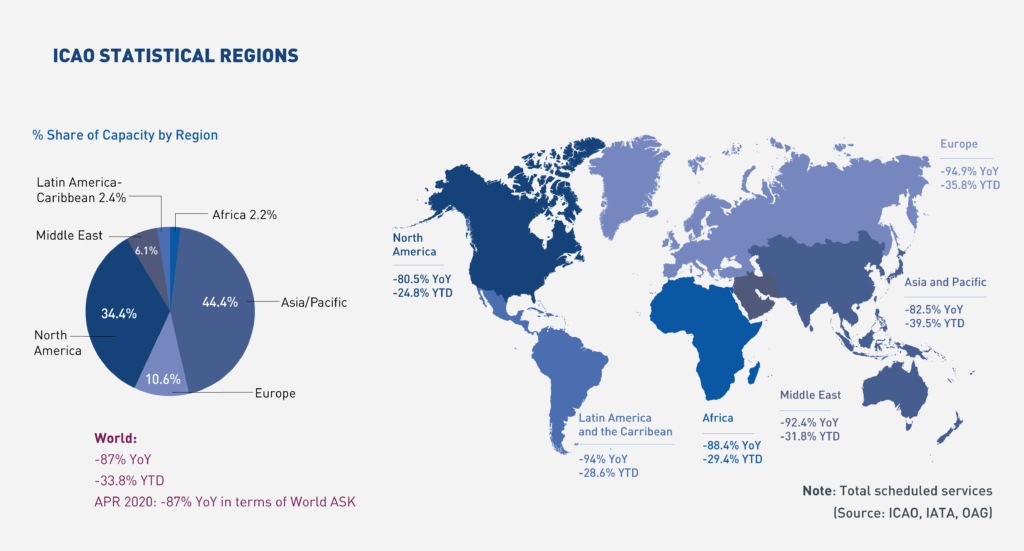The air transport industry is not only a vital engine of global socio-economic growth, but it is also of vital importance as a catalyst for economic development. Not only does the industry create direct and indirect employment and support tourism and local businesses, but it also stimulates foreign investment and international trade.
Informed decision-making is the foundation upon which successful businesses are built. In a fast-growing industry like aviation, planners and investors require the most comprehensive, up-to-date, and reliable data. ICAO’s aviation data/statistics programme provides accurate, reliable and consistent aviation data so that States, international organizations, aviation industry, tourism and other stakeholders can:
- make better projections;
- control costs and risks;
- improve business valuations; and
- benchmark performance.
The UN recognized ICAO as the central agency responsible for the collection, analysis, publication, standardization, improvement and dissemination of statistics pertaining to civil aviation. Because of its status as a UN specialized agency, ICAO remains independent from outside influences and is committed to consistently offering comprehensive and objective data. Every month ICAO produces this Air Transport Monitor, a monthly snapshot and analysis of the economic and aviation indicators.
ECONOMIC DEVELOPMENT – June 2020
World Results and Analyses for April 2020
Total Scheduled Services (Domestic and International)
Passenger traffic

Revenue Passenger-Kilometres – RPK
World passenger traffic fell by -94.3% YoY in April 2020, -41.4 percentage points lower than the decline in the previous month. This substantial contraction was unprecedented in the past decades with global aviation being virtually shut down in the course of the large scale of full-month lockdown across all regions. As some countries started to ease the lockdown and travel restrictions alongside positive announcements on resumption of domestic operations, it is likely to see traffic bottoming out in the coming month albeit at a slow pace.

International Traffic vs. Tourist Arrivals
International passenger traffic fell by -98.4% YoY in April 2020, -42.6 percentage points lower than the decline in the previous month. The deeper drop in international traffic than domestic traffic was due to border closures and quarantine enforced by governments to contain the global spread of the virus. The international tourist arrivals followed a similar trend as international passenger traffic and came to a standstill.
Capacity

Available Seat-Kilometres – ASK
Capacity worldwide fell by -87.0% YoY in April 2020, -50.8 percentage points lower than the decline in the previous month (-36.2%). With insignificant signs of relaxation of lockdown restrictions, world capacity is expected to improve marginally in May 2020 to -85.6% down YoY.

Load Factor
The passenger Load Factor fell to 36.6% in April 2020, -24.0 percentage points lower than the previous month. The decline in traffic was faster than capacity reduction, the April LF was -46.2 percentage points lower than the rate in the same period of 2019.
Freight Traffic

Freight Tonne-Kilometres – FTK
World freight traffic reported a decline of -27.7% YoY in April 2020, -12.5 percentage points lower than the fall in the previous month. Air cargo demand reached its historical low level suppressed by the subdued manufacturing activity and weakened goods consumption during the great lockdown. However, demand for medical supplies and other essential goods continued to increase and withheld air freight traffic from collapsing as passenger traffic. Although all regions suffered from a plunge in freight traffic, the scale of contractions varied by regions, driven by the different degree and phase of pandemic impact. North America registered the smallest decline while Latin America/Caribbean and the Middle East were hit the hardest with around 40% of the traffic evaporated.
Top 15 Airports (Ranked by aircraft departures, passengers and volume of freight)
Note: Figures include total scheduled and non-scheduled services
April 2020: -55.3%, -72.1%, and -5.7% YoY in terms of aircraft departures, passengers and freight for the Top 15

In terms of aircraft departures, all the Top 15 airports reported declines with a combined fall of -55.3% YoY. Ten out of the Top 15 airports were in the US, and the remaining were in China and Japan. Phoenix (Deer Valley) ranked 1st with a relative small decrease of -12.5% owing to the general aviation operations. Atlanta recorded the most significant decline of -73.0%.

In terms of passengers, the Top 15 airports fell drastically by -72.1% YoY. All the Top 15 airports were in Asia/Pacific and mostly in China, as the country started to reopen the economy and domestic traffic gradually recovered. Chengdu ranked 1st being the only airport with over 1 million passengers, followed by Shenzhen. Beside Chinese airports, Jeju, Seoul and Tokyo also ranked within the Top 15.

In terms of freight, the Top 15 airports reported a decline of -5.7% YoY. Unlike the dreadful drop in passengers, decline in cargo is considerably moderate. Three airports recorded increases with Shanghai and Anchorage growing double-digitally. Memphis ranked 1st with a growth of +4.8%, followed by Hong Kong with a fall of -13.0%.
Top 15 Airline Groups (Ranked by RPK)

April 2020: -88.6% YoY in terms of RPK for the Top 15
In terms of RPK, the Top 15 airline groups accounted for 76.2% of the world’s total RPK in April 2020 and declined by -88.6% YoY. This decline was +5.7 percentage points less than the world’s average on scheduled services, with contraction in traffic of all airlines in the Top 15. Ranking of the Top 15 airlines continued to be distorted due to the different degree and phase of pandemic impact by region and country.
More than half of the Top 15 airlines were Chinese airlines, as China gradually lifted lockdown restrictions ahead of other parts of the world and domestic air travel of the country slowly picked up. China Southern, Air China, China Eastern and Hainan Airlines became the Top 4 with traffic down ranging from -73% to -83%. Four others, Spring Airlines, Sichuan Airlines, Shandong Airlines and Junyao Airlines ranked 6th, 10th, 11th and 15th, respectively.
Four major US airlines remained in the Top 15 with merely less than 10% of the traffic performed compared to the previous year. Southwest ranked 5th with one-quarter of the traffic level of China Southern, followed by America, United and Delta at 7th, 9th and 13th. Qatar Airways made it to the 8th, being the only airline from the Middle East region in the Top 15.
Airlines in Europe also experienced radical demand fall, with only two airlines in the region, IAG and AF-KLM stayed in the Top 15, at 12th and 14th, respectively. Traffic of both airlines were estimated to be below 5% of the level in the previous year.

Worldwide capacity contracted by -87.0% YoY in April 2020. The wide-scale lockdowns have put the global aviation to a halt with air travel demand plummeted and airlines grounding their fleets to reduce capacity to the bare minimum. The dramatic decline in capacity was broad-based across all regions, with the steepest fall seen in Europe and Latin America/Caribbean.
Acronyms: ACI: Airports Council International; ASK: Available Seat-Kilometres; IATA: International Air Transport Association; FTK: Freight Tonne-Kilometres; LF: Passenger Load Factor;
OAG: Official Airline Guide; RPK: Revenue Passenger-Kilometres; UNWTO: World Tourism Organization; YoY: Year-on-year; YTD: Year-to-date.

